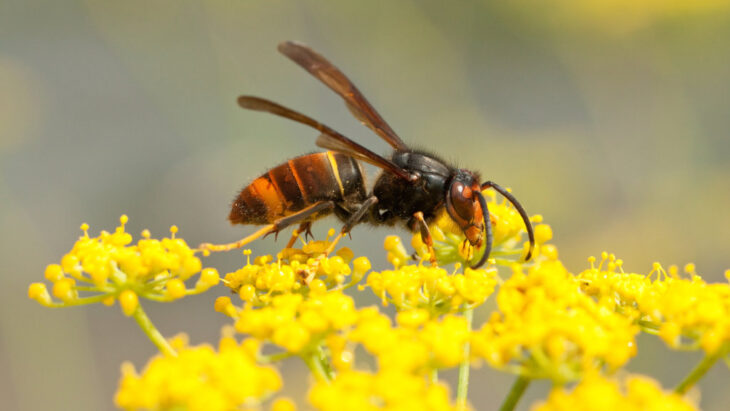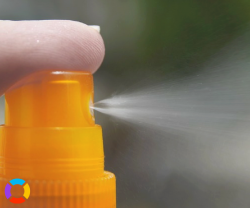What Is Wasping or Wasp Dope + Family Intervention Guide
Published: 09/30/2025

The meth crisis is devastating communities, but a new trend called “wasping meth” is making the epidemic even more lethal. Known on the streets as wasp dope, KD drug or bug spray meth this practice involves mixing methamphetamine with insecticides like Raid.
Wasping is spreading in areas where meth is harder to find or users can’t afford the drug, turning desperation into deadly choices. Families and first responders are now confronting an escalating wave of overdoses, medical emergencies and fatalities tied to this disturbing drug trend.
Worried about meth or wasp dope use? Call 800-996-6135 today to learn about safe treatment options.
What is Wasping (a.k.a. Wasp Dope or KD)?
Wasping is a dangerous trend where meth is laced or replaced with insecticide sprays like Raid. This practice exposes people to highly toxic chemicals that were never meant for human use. On the street it’s also called wasp dope, KD drug, Katie zombie or hot shots.
After the insecticides are crystallized users are able to smoke or inject it. The result is a stronger but unpredictable high that comes with immediate risks such as seizures, hallucinations, paralysis, poisoning and long term dangers like brain damage and organ failure.
Wasping gained attention as the trend spread in impoverished Appalachian communities where meth was either unavailable or too costly. It is now appearing in other regions of the country, compounding an already severe meth epidemic and raising urgent public health concerns.
Families and friends often feel powerless when facing this growing crisis. However, there are steps you can take to help a loved one.
If someone you love is using wasp spray meth, download our free guide: How to Talk to Someone Who’s Using Wasp Spray Meth.
Learn how to have a safe, supportive conversation.
How Is Wasp Dope Made?
The process of making wasp dope is as dangerous as using it. Users spray insecticides such as Raid. They allow it to dry and then use the crystallized residue to smoke or inject. This creates what’s called wasp spray meth. While this may mimic the way meth looks, the result is a poisonous mix of chemicals.
The chemicals release toxic vapors that can poison the lungs and bloodstream. Likewise the heat or flames used can cause severe burns.
Direct contact with the insecticide risks skin irritation, chemical burns and accidental poisoning. This makes both the preparation and use of wasp dope highly dangerous and potentially life threatening.
Every stage of this process carries extreme risks: inhaling toxic fumes, accidental burns during crystallization and exposure to lethal compounds. Unlike real meth there is no way to control the dose or purity. The result is a street drug that looks like meth but delivers unpredictable and often deadly effects.
What Does Wasp Spray Dope Look Like?
At first glance wasp spray meth or wasp dope can resemble crystal meth. This is part of what makes it so deceptive and dangerous.
The crystallized insecticide can take on a glassy, shard-like appearance. It’s sometimes white or yellowish depending on the spray used. Street users may pass it off as regular meth but it is laced with toxic chemicals that have no safe level of use.
Because it mimics the look of meth, there is no reliable way to identify smoking bug spray meth without knowing how it was made. This makes it especially dangerous because users may unknowingly consume lethal contaminants that can trigger seizures, psychosis or fatal poisoning.
Why Do People Lace Meth with Insecticide?

People turn to wasp spray meth or raid meth when traditional meth is either too expensive or unavailable.
The practice of lacing meth with insecticide creates a cheaper and sometimes more intense high, though it comes with catastrophic health consequences. When you are addicted desperation can drive you to experiment with alternatives like bug spray meth despite the obvious risks.
The appeal lies in the immediate effect. Users report a stronger rush, but the tradeoff is severe toxicity, unpredictable reactions and often permanent harm. This makes wasping meth one of the deadliest drug trends in recent years.
It’s a trend that especially impacts the nation’s most vulnerable individuals, those struggling with poverty, addiction and limited access to treatment.
Side Effects of Wasping
Using wasp dope triggers devastating consequences that appear almost immediately.
Short term effects can include hallucinations, psychosis and seizures. This makes the drug extremely unpredictable. Many users also experience nausea, chest pain and severe anxiety within hours of use.
Repeated exposure to wasping meth leads to lasting and life threatening damage over time. Long term risks include paralysis, cancer, brain damage and even death.
The pattern is brutal; a fast, toxic high followed by a harsh crash that leaves the brain and body weaker each time. Unlike regular meth, the effects of wasping are compounded by poison and this creates permanent neurological injury and rapid physical decline.
How Long Is Wasp Spray Toxic to Humans?
Wasp spray meth is dangerous from the moment it’s created and the toxicity doesn’t fade quickly.
Insecticides like Raid contain neurotoxic chemicals that remain harmful for hours to days after application. When crystallized and consumed as “wasp dope,” these toxins stay active inside the body, leading to extended poisoning far beyond the initial high.
Because there’s no safe breakdown process in the body the chemicals can linger in tissues, causing damage to the nervous system, heart and lungs long after use.
The toxic compounds in wasping meth accumulate and intensify. This increases the risk of seizures, coma or death with each use.
Who Is at Risk for Wasping
Wasping meth is most likely to emerge in vulnerable and high risk groups. People already struggling with meth addiction are at the greatest risk, as desperation often pushes them toward dangerous meth alternatives when supply is scarce or prices spike. Individuals experiencing homelessness also face elevated risk.
Limited resources and exposure to high risk environments increases the likelihood of turning to harmful substitutes like wasp spray meth.
Rural communities, particularly in Appalachia, have been heavily affected by this trend. Poverty, isolation and lack of access to treatment fuel experimentation with wasp spray meth as a cheap, available substitute.
Injection drug users are another group at risk because injecting crystallized wasp spray carries a greater danger of poisoning, burns and infections.
Research highlights these risk patterns and has documented clusters of wasping in rural counties where meth use is entrenched and economic hardship drives people to seek cheaper alternatives.
These findings show that wasping isn’t random. It reflects systemic issues of addiction, poverty and limited healthcare. Recognizing who is most vulnerable helps families, providers and policymakers intervene early with prevention, treatment and harm reduction strategies.
Wasp Dope vs. Methamphetamine
Both methamphetamine and wasp dope are extremely dangerous, but the risks of wasp meth, also called bug spray meth or raid meth, go even further.
Regular meth carries high risks, such as addiction, psychosis, heart failure, stroke, and severe social mental decline. However, when meth is combined with insecticide to create a so-called meth alternative, the danger multiplies.
Wasping adds a layer of toxic poisoning to meth’s stimulant effects. Chemicals from bug sprays are not designed for human consumption. They cause burns to the throat and lungs, seizures, organ damage and in many cases, sudden death.
Instead of being a “cheaper” or “stronger” version, raid meth dramatically worsens the likelihood of a fatal overdose and long-term neurological damage. In short, wasping has all the dangers of meth plus lethal toxicity that destroys the body from the inside out.
Families often feel powerless when someone is using wasp spray meth. Our free guide shows you how to talk to them without pushing them away.
Download “How to Talk to Someone Using Wasp Spray Meth” today for help with your loved one.
Getting Help for Wasping & Meth Addiction
Breaking free from wasping addiction or meth dependence requires professional support, not willpower alone. Safe recovery typically begins with meth detox or wasp meth detox, where medical teams manage withdrawal symptoms and protect against dangerous complications.
Quitting meth cold turkey can bring on severe depression, anxiety, intense cravings and even medical emergencies.
After detox, treatment continues with meth rehab, often combining inpatient or outpatient programs with behavioral therapy, peer support and relapse-prevention planning. Long-term recovery is possible when detox, treatment and counseling work together to rebuild health and stability.
If you or someone you love is experimenting with wasp dope, call 800-996-6135 today for safe, immediate help.
Wasping FAQ
Wasping, also known as wasp dope, refers to a dangerous drug trend in which people misuse insecticide products to get high. This typically includes wasp spray. The active chemicals disrupt insects’ nervous systems.
Users may inhale, smoke, snort, drink, inject, or otherwise administer insecticide. Health risks are high, including neurological damage, organ toxicity, seizures, and even death.
Wasp dope is typically made from insecticide sprays containing pyrethroids, which are chemicals that disrupt the nervous system.
Users may “crystallize” the spray using improvised methods, then smoke, inject, or snort it. Some mixtures also contain methamphetamine or other drugs, making the substance unpredictable and extremely dangerous.
People who misuse wasp spray first alter commercial insecticide products into a concentrated, smokable or injectable form, then inhale, smoke, snort, or inject the result. This is sometimes combined with methamphetamine.
These practices are highly dangerous, producing unpredictable neurotoxicity, cardiac and organ damage, seizures, prolonged hospitalization, and risk of death in some regions.
Wasp dope often appears as yellowish or whitish crystals formed after heating or “crystallizing” insecticide spray.
Users may break these shards into smaller pieces to smoke, inject, or mix with other drugs. Wasp dope is unpredictable, inconsistent and unsafe.
Wasping can trigger severe side effects, including agitation, confusion, hallucinations, seizures, breathing problems, muscle spasms, and heart rhythm disturbances.
Long-term use risks include organ damage, paralysis, and death. Emergency treatment is often required, as the drug’s toxicity is unpredictable.
Wasp spray’s pyrethroid chemicals can remain toxic for hours to days after exposure, depending on dose and route. Ingesting, smoking, or injecting intensifies and prolongs harmful effects, causing lasting neurological, respiratory, and cardiac complications requiring medical treatment.
People use “raid meth” or wasp dope because it’s cheap, accessible, and sometimes substituted for methamphetamine. Users chase stimulant-like effects, but the unpredictable toxicity of insecticide makes it extremely dangerous, often leading to severe health crises.
Yes, wasp dope can be fatal because insecticides damage the nervous system, heart, and lungs. Severe reactions include seizures, respiratory failure, cardiac arrest, and organ collapse. Even one use carries life-threatening risks, requiring immediate medical intervention.
How Do I Get Help for Wasping?
Safe recovery begins with detox, rehab and support. Reaching out to medical professionals, treatment centers, or addiction hotlines can connect you with the care and resources needed to safely stop wasping and build long-term recovery.
Explore Detox.com to find a treatment center near you or call today 800-996-6135 for immediate support.



